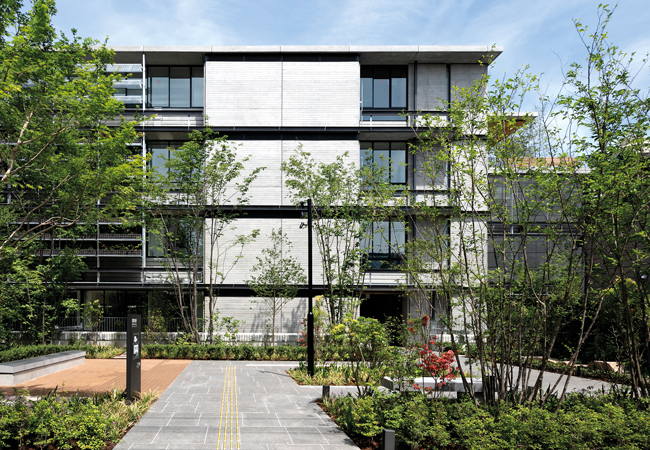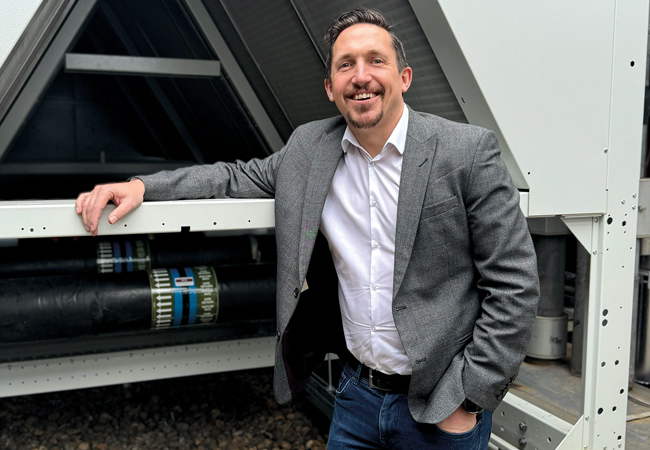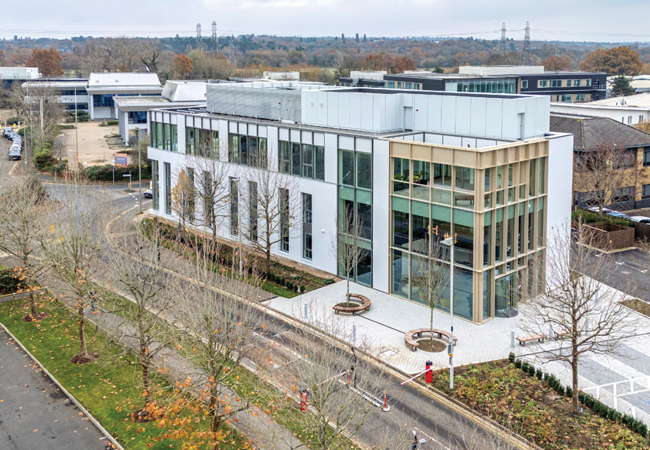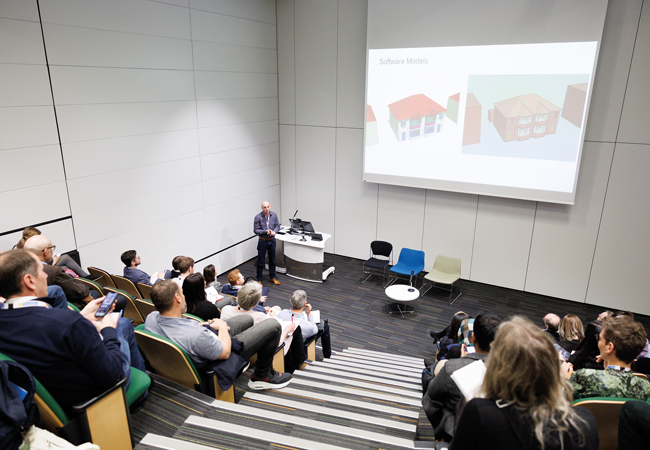
The symposium took place at the Technology and Innovation Centre at the University of Strathclyde
The CIBSE ASHRAE Technical Symposium made a welcome return to Scotland last month, as the University of Strathclyde hosted two stimulating days of networking and presentations by academics and industry practitioners.
The symposium was due to take place in Glasgow three years ago, but was cancelled after the spread of Covid-19 forced the UK into lockdown in March 2020.
In his conference welcome, Vice-Chancellor of the University of Strathclyde Professor Sir Jim McDonald recalled the work CIBSE had undertaken in response to the pandemic. As president of the Royal Academy of Engineering, Sir Jim brought together engineering institutions to advise the government on minimising the transmission risk. He told delegates that CIBSE had played ‘an outstanding role’ in producing guidance on infection-resilient ventilation design.
The symposium theme was ‘Delivering sustainable, safe and healthy buildings for a new zero future’ and, in his introduction, CIBSE President Kevin Mitchell FCIBSE said this was ‘common to all our work’.
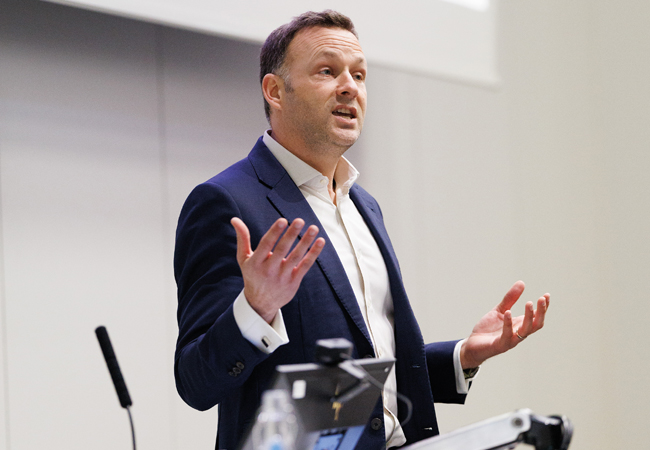
Keynote speaker Casey Cole
The keynote presentation was given by Casey Cole, CEO at Guru Systems and chair of the Heat Trust board, who said that, to cost-effectively meet its carbon targets, the UK must increase the proportion of heat delivered by heat networks from about 2.5% today to at least 25% by 2050.
However, Cole added that ‘where heat networks are well designed, they are often not properly commissioned’, resulting in high heat loss and increased fuel use. By contrast, results from a project delivered by Guru had demonstrated that ‘proper commissioning can reduce heat losses on networks by 70%’.
To address this inefficiency risk, it is increasingly common for developers to require acceptance testing, rather than rely on commissioning certificates. Cole said that CIBSE CP1 2020 (the code of practice for heat network design) requires, as a minimum, independent testing on a sample of buildings, although Guru Systems advocates acceptance testing on 100% of buildings.
Until now, he added, heat networks were unregulated and all a developer had to do was to ‘declare intent’. That is set to change once Ofgem becomes the regulator for heat networks later this year. (Freddie Valletta MCIBSE, senior engineer at FairHeat, picked up on this issue in his presentation later). ‘You will have to show Ofgem-measured data that demonstrates the project achieves what was intended – and, if not, you will have to put in place a remediation plan,’ said Cole.
Professor Eames introduced the concept of transferring waste heat by lorry or train for use in supplying a heat network
Digital tools would make acceptance testing ‘quicker and more cost-effective’, he said, and Guru Systems had developed tools, in partnership with consultancy FairHeat, that will allow heat network developers to benchmark for future maintenance and efficiency improvements, and hold their supply chain to account. Crucially, Cole added the tools are designed for all levels of expertise to help address the growing skills gap.
Nikzad Falahati, from FairHeat, talked about work with the Department for Business, Energy and Industrial Security, analysing 32 heat network schemes of various sizes, using different technologies, ‘to understand where improvements can be made’. The study found older heat networks performed worse than newer ones. FairHeat identified easy wins and major works items that would improve operational carbon emissions. Falahati cited a scheme where implementing easy wins would reduce heat losses by 71%, which included lowering operating temperatures by reducing boiler setpoints and insulating parts of the network. Implementing the major works interventions would further reduce heat losses across the site to 81%, but they were ‘more costly’. He added that ‘data was key’ to understanding potential interventions.
Annie Marston, from REsustain, presented a case study supporting the case for recommissioning buildings before retrofit, ensuring the controls in the building are fully optimised. The study looked at control optimisation, comparing the theoretical exercise with actual data for the buildings after the control strategies had been implemented. The energy usage in existing building stock can be significantly improved by understanding the HVAC and controls, and using these details to build the energy model. .
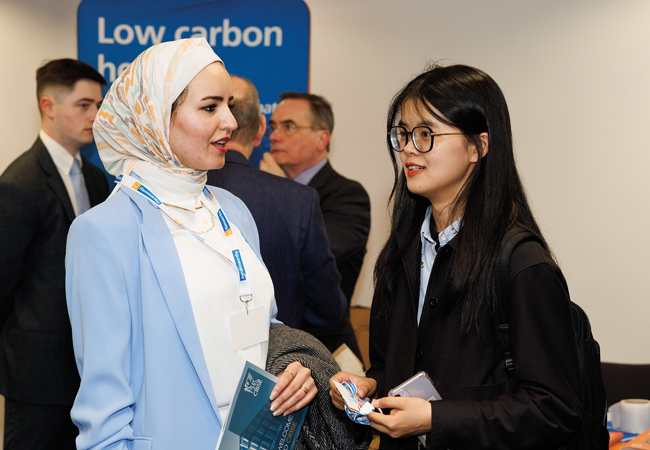
Networking between presentations
Loughborough University’s Professor Philip Eames introduced the concept of transferring waste heat by lorry or train from manufacturing plant, for use in supplying a heat network, for example. He is working on a study looking at recovering waste heat from Rugby Cement Works, and said it was far more effective to use phase-change materials than water to increase energy density. ‘It should be possible to transport 2-3MWh of heat on a lorry,’ he said.
The system Eames is investigating uses oil as the heat-exchange medium, and his paper modelled the potential heat-storage capacity of horizontal tanks and assessed the heat loss.
Graeme Maidment and Catarina Marques from LSBU outlined the GreenSCIES initiative as a solution to decarbonising heat. They gave an overview of the scheme proposed in Islington, London, which uses heat reclaimed from a data centre and the Tube network for heating social housing. Maidment outlined several other sites that recovered heat from supermarket refrigeration systems.
Valetta, of FairHeat, concluded the session by outlining the consultancy’s work in developing technical standards for heat networks in the UK. The Heat Networks Technical Assurance Scheme is set to be delivered by 2024 and could, potentially, be mandatory. Valetta explained that the current proposal is for a performance-based scheme with gateways at key development stages, with progress to the next stage prevented until the criteria had been met.
Day one ended with a civic reception at Glasgow City Chambers, where Inkling’s Susie Diamond was awarded a CIBSE Bronze medal for her volunteering work, including her contribution to TM59: Overheating risk calculation, which has been incorporated in Building Regulations.
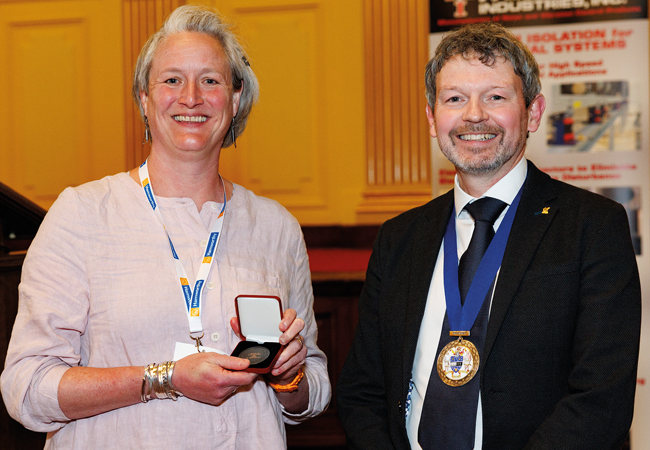
President Kevin Mitchell presents a CIBSE Bronze medal to Susie Diamond



